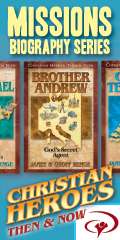The fall 40 Days for Life begins one week from today,
and it’s going to shatter all records!
From next Wednesday, September 28, through November 6,
40-day campaigns of prayer and fasting, constant vigil
and community outreach will be held in …
… 301 cities …
… all across the United States (48 states plus the
District of Columbia and Puerto Rico) plus Canada,
England, Spain, Australia, Argentina and Germany.
Four dozen of these locations are launching their
FIRST-EVER 40 Days for Life campaigns.
Amazing!
And, as we all prepare to pray and fast, stand vigil
and conduct grassroots outreach together, there is
BREAKING NEWS that shows — with God’s abundant grace
and blessings — what could happen in YOUR community.
Since the last 40 Days for Life campaign ended, two
more abortion centers where 40 Days for Life vigils
have been conducted have shut their doors and CLOSED!
In PENSACOLA, FLORIDA, volunteers arriving to pray at
the abortion center found a sheriff’s notice on the
front door of the facility. Legal proceedings had
begun against the abortion business, and a judge
ordered the center CLOSED.
In FOREST GROVE, OREGON, the local 40 Days for Life
team confirmed that the owner of the abortion center
had CLOSED this facility — and one of his other
locations as well. Volunteers told me the signs are
down, the building is empty — and a phone call
confirmed the permanent closure.
This makes SIXTEEN abortion centers where 40 Days
for Life vigils have occurred that have SHUT DOWN.
To God be the glory!
If you’ve not taken part in 40 Days for Life before,
I hope this shows you what can happen when you put
your trust in God and step forward in faith.
Find the 40 Days for Life campaign nearest you — and
learn how you can help make a lifesaving difference in
your own community — by going to:
http://40daysforlife.com/location.cfm
Look for your nearest location, click on that city name,
and then sign up to help however you can.
By Shawn Carney
40 Days for Life








 "Oh that God would give every mother a vision of the glory and splendor of the work that is given to her when a babe is placed in her bosom to be nursed and trained! Could she have but one glimpse in to the future of that life as it reaches on into eternity; could she look into its soul to see its possibilities; could she be made to understand her own personal responsibility for the training of this child, for the development of its life, and for its destiny,--she would see that in all God's world there is no other work so noble and so worthy of her best powers, and she would commit to no other's hands the sacred and holy trust given to her." -JR Miller
"Oh that God would give every mother a vision of the glory and splendor of the work that is given to her when a babe is placed in her bosom to be nursed and trained! Could she have but one glimpse in to the future of that life as it reaches on into eternity; could she look into its soul to see its possibilities; could she be made to understand her own personal responsibility for the training of this child, for the development of its life, and for its destiny,--she would see that in all God's world there is no other work so noble and so worthy of her best powers, and she would commit to no other's hands the sacred and holy trust given to her." -JR Miller






